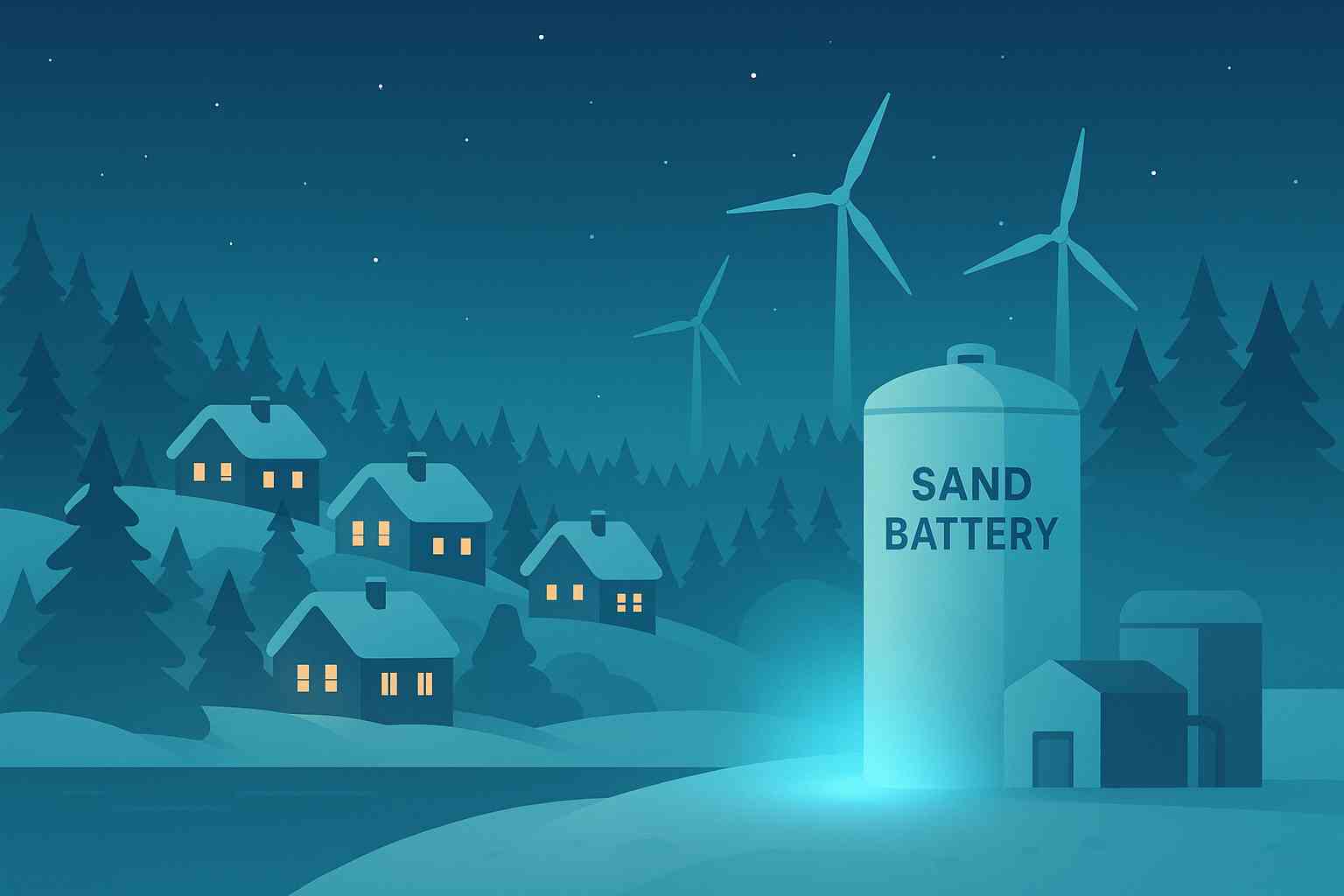How Finland’s World-Leading Sand Battery Powers Town Heating Without Fossil Fuels
Imagine heating an entire town without burning a single drop of fossil fuel or relying on conventional batteries made from rare minerals. It might sound like the future, but in Finland, this is now a reality thanks to the world’s biggest sand battery—a groundbreaking technology transforming sustainable energy storage and use.
In this article, we dive deep into how this innovative sand battery works, why it’s a game-changer for renewable energy storage, and what it means for the future of heating and decarbonization worldwide.
What Is the World’s Biggest Sand Battery and How Does It Work?
The sand battery, developed by Finnish energy company Polar Night Energy, is a large-scale thermal energy storage system that uses ordinary sand as a sustainable heat bank. Unlike chemical batteries, the sand battery stores excess renewable energy by converting it into heat, which is then retained in hundreds of tons of sand at extremely high temperatures—around 500°C.
This heat can be released gradually to provide consistent, on-demand heating for buildings or district heating networks, eliminating reliance on fossil fuels. The system leverages electric heaters powered by excess wind and solar energy, effectively turning fluctuating renewable power into a reliable heating source.
Its simple yet revolutionary principle lies in sand’s incredible heat retention capacity combined with an insulated storage container, making it both cost-effective and environmentally friendly.
Why Is the Sand Battery a Breakthrough for Renewable Energy Storage?
Energy storage has long been one of the biggest challenges when moving away from fossil fuels. Chemical batteries, while effective for short-term storage, have limitations in scale, cost, lifespan, and environmental impact due to mining.
The sand battery addresses these issues by providing:
– Massive storage capacity: Able to store energy for weeks to months.
– Longevity: Minimal degradation over time compared to chemical options.
– Cost efficiency: Utilizes abundant, inexpensive materials with low maintenance.
– Low environmental footprint: Avoids toxic substances and complicated recycling.
With intermittent renewable sources like wind and solar growing exponentially, the sand battery allows towns and cities to smooth energy supply fluctuations and reduce peak fossil fuel consumption by storing excess green energy as heat.
How Will This Technology Transform Heating in Finnish Towns and Beyond?
Finnish winters are notoriously harsh, and heating demands spike drastically. The sand battery pilot project currently heats the municipality of Kemi’s district heating system. By integrating the sand battery, Kemi can maintain stable heating without burning gas or oil during cold snaps or low wind conditions.
This means:
– Reduced greenhouse gas emissions: Cutting fossil fuel dependency sharply.
– Energy security: Less vulnerability to fuel price spikes or supply disruptions.
– Scalable renewables: Greater integration of green power into daily use.
As governments worldwide pursue ambitious carbon neutrality goals, similar projects are expected to emerge globally, adapting the technology to different climates and energy infrastructures.
What Are the Challenges and Future Prospects of Sand Battery Technology?
While the Finnish project is a major success, sand batteries still face challenges:
– Scaling manufacturing and deployment: Industrializing production processes to meet growing demand.
– Infrastructure integration: Harmonizing with existing energy grids and district heating systems.
– Awareness and investment: Encouraging broader adoption through policy support and financing.
However, ongoing research aims to improve efficiency, reduce costs further, and explore hybrid systems combining sand batteries with other storage tech.
See our recent guide on AI to learn how artificial intelligence is helping optimize energy storage and grid management alongside advances like sand batteries.
For more detailed background, check out this Source.
Summary
The world’s biggest sand battery stands as a milestone in sustainable energy storage, enabling Finnish towns to heat homes reliably without fossil fuels. Its scalable, eco-friendly approach unlocks new potential for renewable energy integration and decarbonizing residential heating worldwide. As this innovative technology gains traction, it could transform how communities tackle climate change, energy security, and economic resilience.
Ready to explore cutting-edge renewable energy solutions? Stay updated and harness the power of innovation for a greener future!
—
FAQ
Q1: How does a sand battery differ from a traditional chemical battery?
A sand battery stores energy thermally by heating sand to high temperatures, then releases the heat for heating purposes. Unlike chemical batteries that store electricity electrochemically, sand batteries are long-lasting, inexpensive, and use abundant materials without hazardous waste.
Q2: Can sand batteries be used for electricity storage or just heating?
Currently, sand batteries are optimized for thermal energy storage and district heating applications. While they do not directly store electricity, the stored heat can reduce the need for electric heating during demand peaks, effectively balancing the energy system.
Q3: What makes sand battery technology suitable for cold climates like Finland?
Sand batteries excel in cold regions because heating demands are high. Their ability to store heat for extended durations allows stable heating supply during long winters, helping reduce fossil fuel consumption and emissions even in extreme temperature conditions.
—
📢 Want more insights like this? Explore more trending topics.



